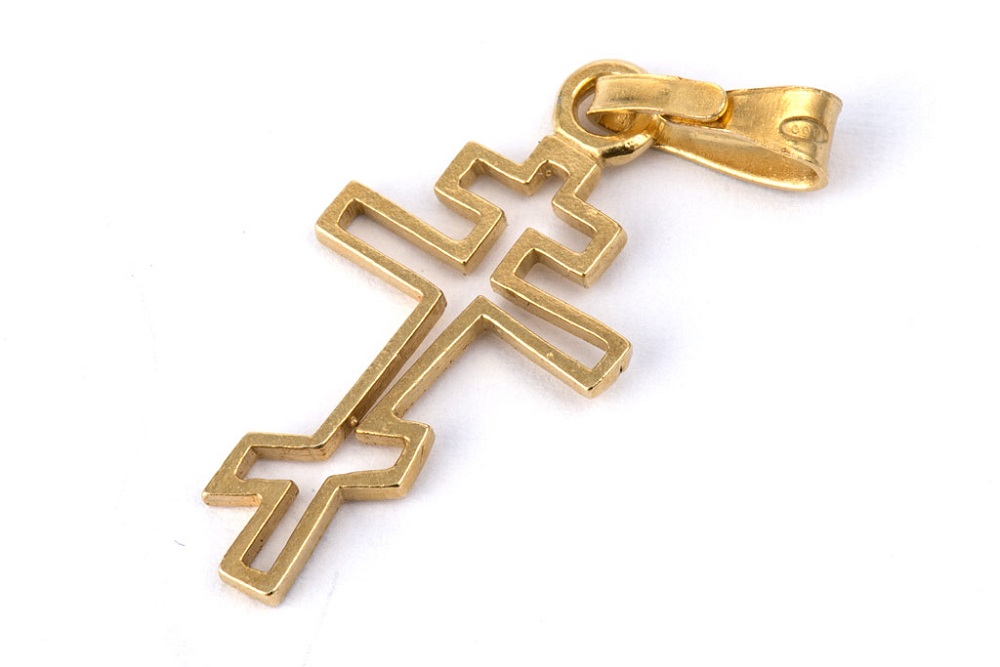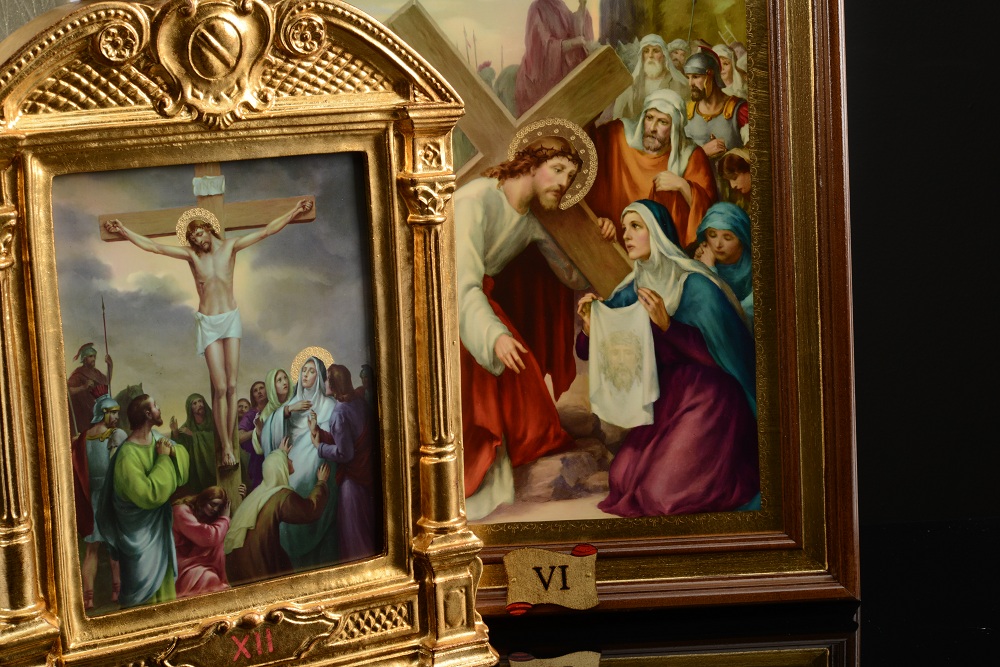The meaning of INRI on the cross of Jesus: where does it come from and what does this mysterious abbreviation that appears in all depictions of Jesus on the cross mean? And what is the meaning of the name Jesus?
Each one of us, attending churches and places of worship, but also leafing through art history books showing depictions of the Crucifixion, has happened to dwell on the plaque placed on the cross, usually just above Jesus’ head. In this case it is not a prerogative of Christ’s crucifixion and has no particular religious explanation. Instead, the significance of INRI on the cross is to be found in Roman law, which prescribed, in the case of a death sentence by crucifixion, a very precise set of regulations.

We have to think that in the days of Republican Rome only slaves, prisoners of war, and insurgents were executed in this way. Crucifixion was considered a particularly execrable sentence because the body was exposed for days along the road, at the mercy of the sun, bad weather, and animals. Later, in imperial times, it was decided to extend this type of condemnation to free men as well. Those who were sentenced to crucifixion were brutally whipped, before the actual execution was carried out: the whippings were meant to reduce them to death, but not to kill them, because death was to take place on the cross. And so that this sentence would be a warning to all, the judge would dictate a titulus, the reason for the sentence, which would be engraved on a wooden or terracotta sign and hung around the neck of the condemned man, along with his name.

This was also the case for Jesus. The meaning of INRI on the cross is the Titulus crucis that Pontius Pilate decreed for Christ when condemning Him to death, as the reason for the sentence.
But what does INRI mean? INRI stands for ‘Iesus Nazarenus Rex Iudaeorum,’ ‘Jesus Nazarene King of the Jews.’
The inscription INRI is reported differently in the four canonical gospels.
Mark’s Gospel concerning the plaque placed on Jesus’ head reads only, “The inscription indicating the reason for condemnation said, The King of the Jews” (Mark 15:26) Matthew writes, “Above his head they placed the written reason for his condemnation: ‘This is Jesus, the King of the Jews'” (Matthew 27:37). In Luke’s Gospel, on the other hand, we read, “There was also an inscription above his head: ‘This is the King of the Jews'” (Luke 23:38)
The Gospel of John presents a particular interpretation. On occasions of solemn events the titulus was even written in three languages. In John’s Gospel it is written that this was also the case for the death of Jesus, and that Pilate wanted to mock Christ by having the titulus written in three languages: “Meanwhile Pilate also had the title written, which said the cause of condemnation, and had it placed on the cross. It was written there, ‘Jesus of Nazareth, King of the Jews.’ Now many of the Jews read this inscription, the place where Jesus was crucified being near the city. And it was written in Hebrew, Latin and Greek. Therefore said the great Priests of the Jews to Pilate, ‘Do not write, King of the Jews; but that he said, I am the King of the Jews.’ ‘ Pilate answered, ‘What I have written, I have written.’” (Jn. 19:19-22).

On crucifixes in Orthodox Churches the inscription is not INRI, but INBI, from the Greek Ἰησοῦς ὁ Ναζωραῖος ὁ Bασιλεὺς τῶν Ἰουδαίων, Ihsous Nazoraios Basileus ton Ioudaion, Jesus Nazarene King of the Jews.
A walnut wood panel in Rome is considered to be the original plaque affixed to the cross of Jesus. It is kept in the Basilica of Santa Croce in Gerusalemme, where once stood the palace of Empress Helena, mother of Constantine, who had collected many relics of the Passion. It is difficult to prove the veracity of this plaque, which was found in the 15th century during restoration work on the choir, ceiling and apse fresco. In a niche a lead box was found that contained a terracotta table, with the inscription “TITULUS CRUCIS” and the initial part of inscriptions in Greek, Latin and Hebrew. Legend has it that it was St. Helena herself who brought part of the tablet to Rome along with the three crosses found on Golgotha and the nails of the crucifixion.
The name of Jesus in the Hebrew language
According to the Gospel of John, Pilate had Jesus’ titulus crucis written in three languages. Connecting with the writing in Hebrew, let us dwell for a moment on the meaning of Jesus’ name in the Hebrew language. The Aramaic name “Yeshu” is the transliteration of יֵשׁוּעַ (Yeshu’a), and is pronounced “Yeh-shoo,” without the “a.” The Italian equivalent is Joshua, of which Jesus is an alternate form, and it means “YHWH (God) is salvation.” When the Bible was translated into Greek and then Latin the name was rendered as Ἰησοῦς (Iēsoûs) and later Iesus. The name Yehoshùa was quite common in the times recounted in the Gospels. Even in the genealogy of Jesus (Lk 3:27) we find another Jesus his ancestor. Besides Jesus in the Bible we meet Joshua, precisely, the leader who led the people of Israel after the death of Moses. St. Paul had a trusted co-worker named Jesús (Col 4:11).
Jesus’ name is one with His mission, with His destiny. When the angel appeared to Joseph in a dream, He told him about Mary, “She shall bring forth a son, and you shall call Him Jesus: for He shall save His people from their sins” (Matt. 1:21). In the original Greek text, the name mentioned by the angel is Ỉησοῦν, Iesùn, in the Hebrew texts ישוע (Yeshùa). The Hebrew phrase read, “you shall call him Yèshùa for he will save his people,” and here in the phrase we find the interpretation of the name: Yeshùa, “Yah will save,” where Yah is the abbreviation of God’s name (“Yah [יה] is my strength,” Ex 15:2) and shùa means “salvation.”
Meta description: We discover the meaning of INRI on the cross of Jesus and how in the very name of Christ in Hebrew is already enshrined the ultimate meaning of His coming into the world.





















